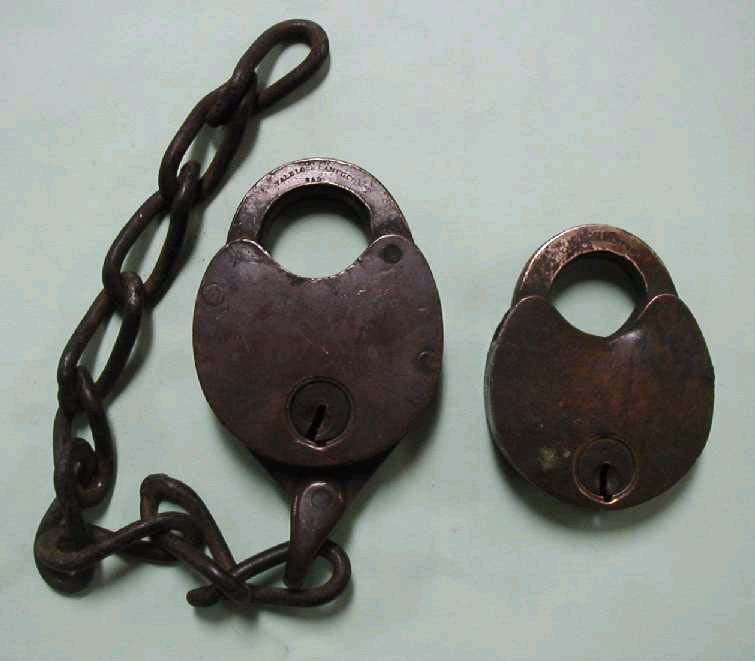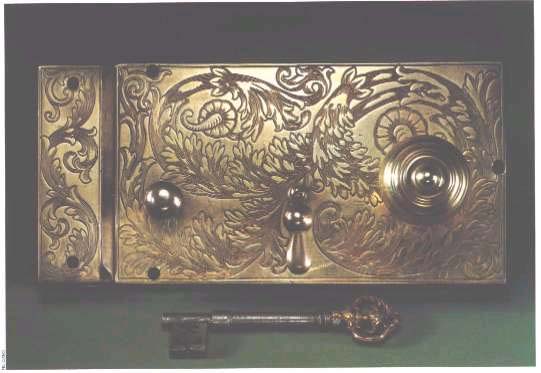
Identification
The first things a collector wants to know about his latest
treasure are "who made it, when and where? Then the hunt begins. The best clues
are markings on the lock itself. If there is a company logo or monogram, there
is almost always an answer. If it has a distinctive shape, such as the six lever
or round brass push key, that's a good place to start looking. There are fads
and styles in the manufacture of locks as with any other commodity, and these
can tell you much about possible starting and ending dates.
As you become more interested in who, when and where, there are many resources
available, including collector newsletters, company histories, trademarks,
patents, books, periodicals, catalogs. See the listing of references elsewhere
on this site.

Yale cast brass spring padlocks.
In 1870, Yale had repeated inquiries from customers for a flat
key padlock and for several years tried to meet these demands.
However, Yale had other priorities which prevented the execution
of this intention. In 1871, Yale Lock Co. arranged to have these
locks constructed by a outside contractor.
The result was a rare lock rigid in construction and was recieved confidently by the trade. They are stamped on the shackle;
"Made for Yale Lock Man'fg Co. B&D".
The lock on the left sold for $1.60 in 1872.
These two locks showed up from different sources at
the WCLCA show in 2002.

Box Lock with Key, English, Late 17th Century, Brass and Steel, 4" high
x 7" wide.